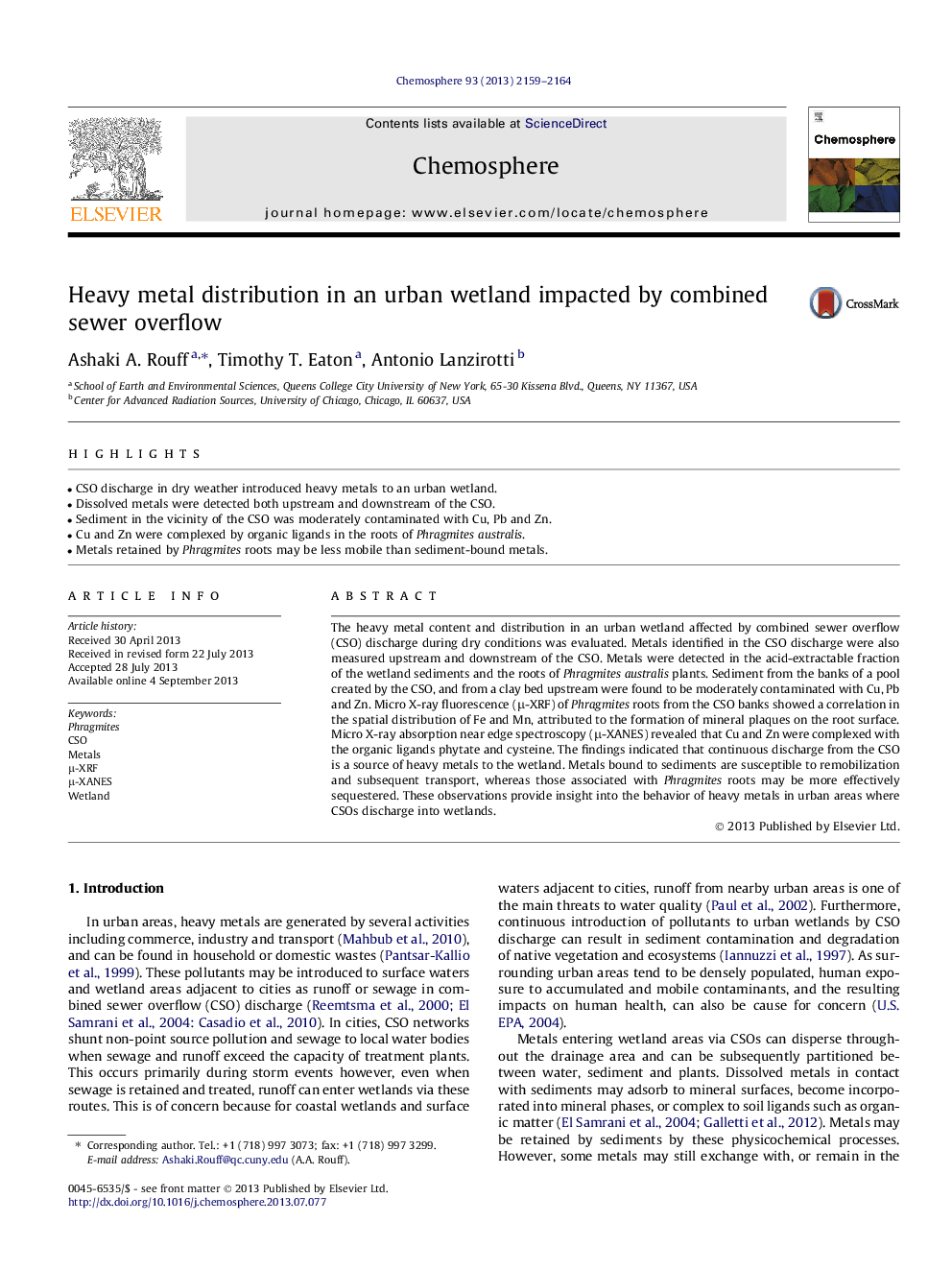| Article ID | Journal | Published Year | Pages | File Type |
|---|---|---|---|---|
| 6310213 | Chemosphere | 2013 | 6 Pages |
â¢CSO discharge in dry weather introduced heavy metals to an urban wetland.â¢Dissolved metals were detected both upstream and downstream of the CSO.â¢Sediment in the vicinity of the CSO was moderately contaminated with Cu, Pb and Zn.â¢Cu and Zn were complexed by organic ligands in the roots of Phragmites australis.â¢Metals retained by Phragmites roots may be less mobile than sediment-bound metals.
The heavy metal content and distribution in an urban wetland affected by combined sewer overflow (CSO) discharge during dry conditions was evaluated. Metals identified in the CSO discharge were also measured upstream and downstream of the CSO. Metals were detected in the acid-extractable fraction of the wetland sediments and the roots of Phragmites australis plants. Sediment from the banks of a pool created by the CSO, and from a clay bed upstream were found to be moderately contaminated with Cu, Pb and Zn. Micro X-ray fluorescence (μ-XRF) of Phragmites roots from the CSO banks showed a correlation in the spatial distribution of Fe and Mn, attributed to the formation of mineral plaques on the root surface. Micro X-ray absorption near edge spectroscopy (μ-XANES) revealed that Cu and Zn were complexed with the organic ligands phytate and cysteine. The findings indicated that continuous discharge from the CSO is a source of heavy metals to the wetland. Metals bound to sediments are susceptible to remobilization and subsequent transport, whereas those associated with Phragmites roots may be more effectively sequestered. These observations provide insight into the behavior of heavy metals in urban areas where CSOs discharge into wetlands.
